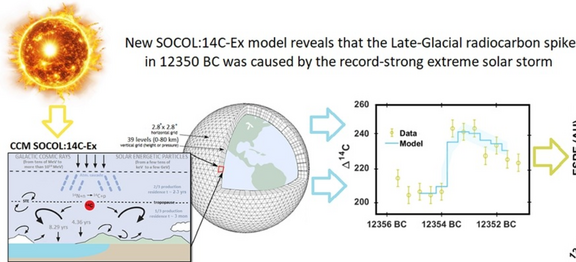
Solar Physics
Dr. Gregory Fleishman.
The key driver of all the aspects of solar activity is the magnetic field. The solar magnetism group at KIS studies the magnetic field topology, evolution and interaction with the solar plasma throughout the only visible part of the Sun: the atmosphere. From the photosphere, through the chromosphere and all the way up in the corona, the members of our group rely on spectropolarimetric inversions, radio observations, MHD simulations, and magnetic field extrapolations to infer, reconstruct and, most importantly, understand the magnetic field of our host star.
The focus of our research are different manifestations of the solar magnetism:
The Active Regions and Solar Flares (G. Fleishman, J.M. Borrero, T. Kaltman): these are places where the strong magnetic fields protrude through the solar photosphere. We aim to reconstruct their 3D structure using radio observations and magnetic field extrapolations, and attempt to precisely measure their magnetic fields and electric currents in the photosphere and the chromosphere.
Quiet Sun (J.M. Borrero, I. Milic): Major part of the solar surface is permeated with weak, highty structured magnetic field. Our researchers are also studying this manifestatino of solar magnetism, using Zeeman and Hanle effects.
Prominences and Filaments (A. Vicente Arevalo, I.Milic): These relatively cool and dense plasma formations are suspended at the coronal heights through complicated magnetic configurations. Reconstructing the magnetic fields of these objects is challenging but fundamental, as they play a major role in space weather.
Diagnostics techniques: Our group actively works on the development of extrapolation codes (G. Fleishman), high-energy diagnostics (G. Fleishman, T. Kaltman), inversion codes (J.M. Borrero, I. Milic, A. Vicente Arevalo), MHD diagnostics (J.M. Borrero, H. Villa Crespo), that allow interpretation of existing and upcoming multi-wavelength observations of the solar atmosphere.
To develop and employ state-of-the-art observation and analysis techniques, the group for solar magnetism actively collaborates with other KIS groups and departments.
![Figure 1 [Translate to Englisch:]](/fileadmin/_processed_/7/9/csm_2025-06-23_Press_release_Borrero_figure1_d55fc92e76.png)
